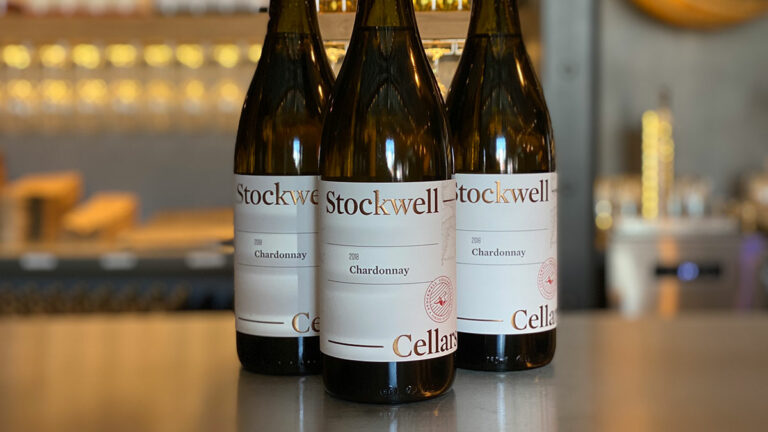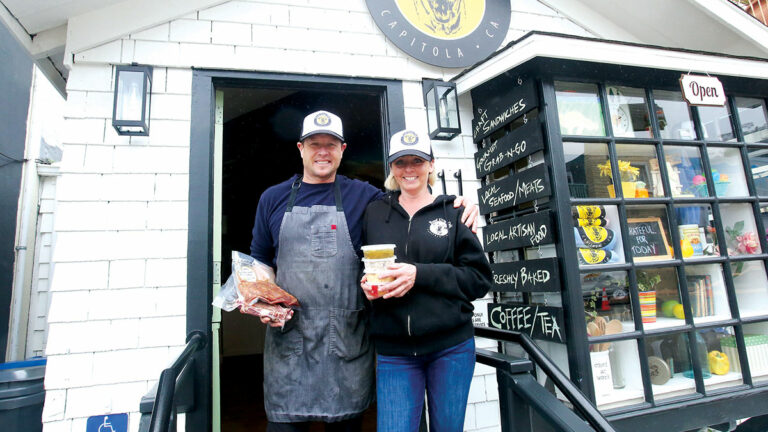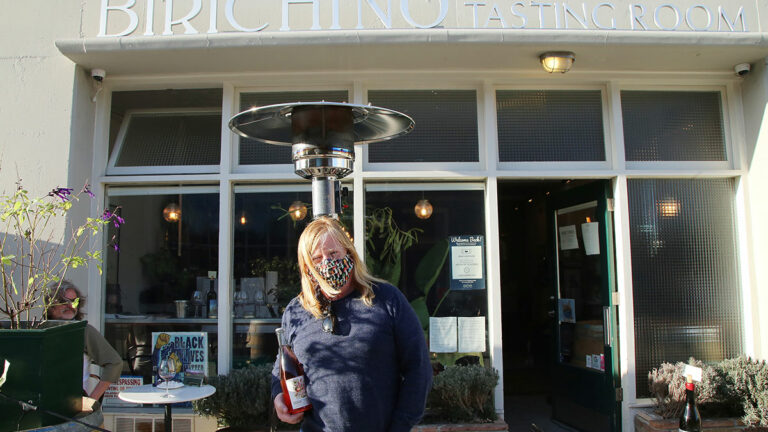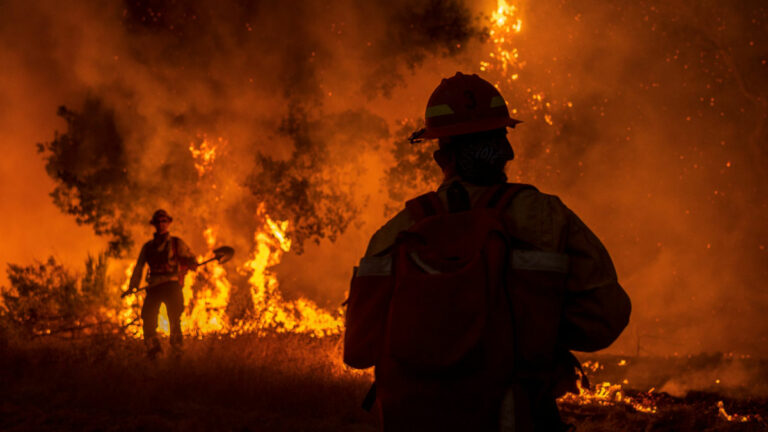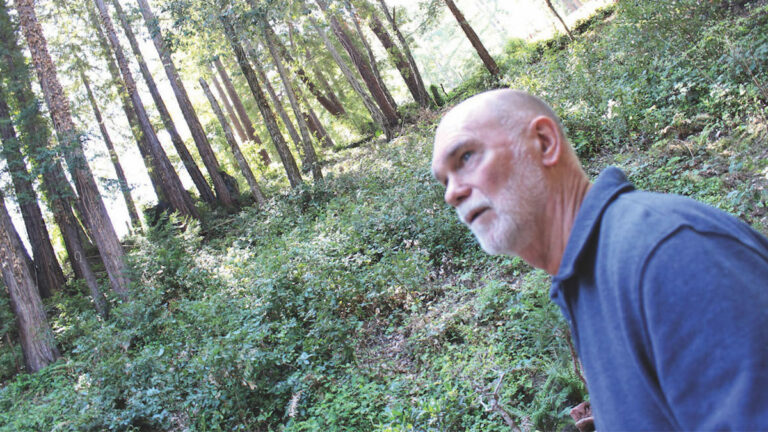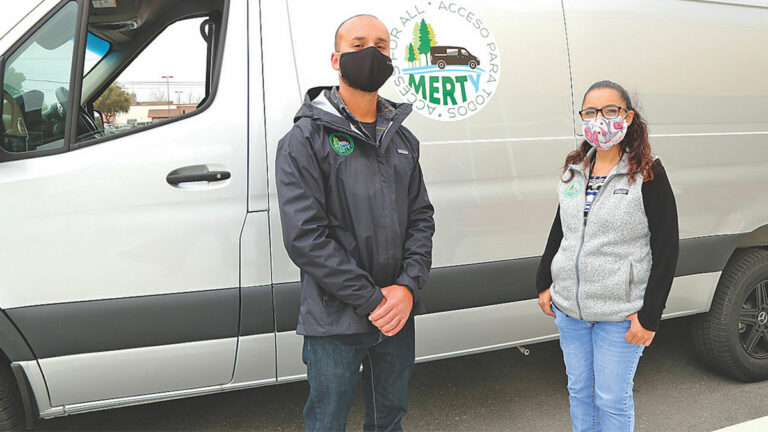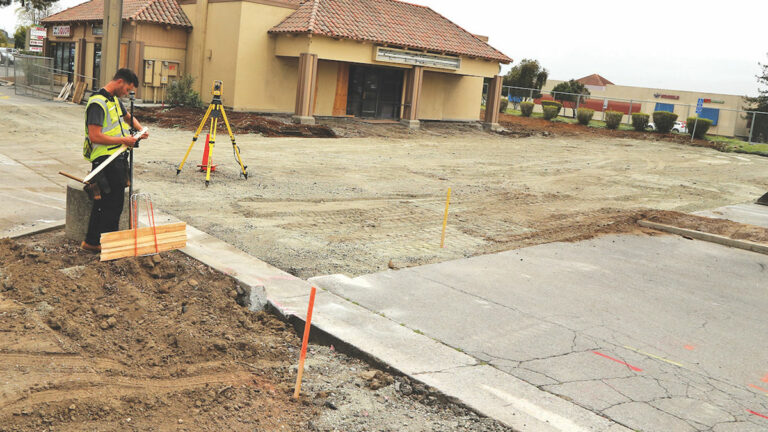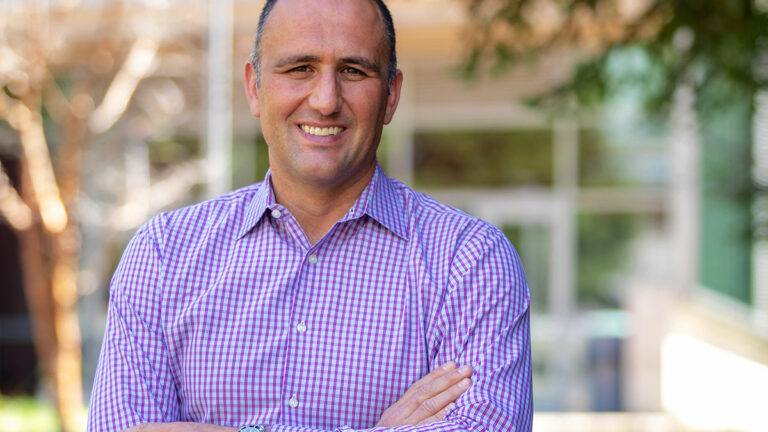By Drew Penner
From the red sign with twin suns beaming their gratitude toward hand-painted white letters spelling “THANKS FIREFIGHTERS” by a fire-survivors camp in Davenport, to the wildland battle scene depicted on the side of a beer distributor doing the rounds in Felton, wildfire danger remains top of mind in Santa Cruz County.
And now, as a state agency revamps its development rules, residents displaced by last year’s CZU Lightning Complex fire—alongside local politicians, property owners and environmentalists—are closely monitoring the rework.
The Board of Forestry and Fire Protection is clarifying sometimes murky construction standards and solidifying better security measures for when wildfires strike again. It’s crunch time for the agency, as on July 1 it will begin regulating additional fire-prone areas.
The draft rules highlight the importance of ridgelines and greenbelts in stopping the spread of runaway flames, but the most contentious part of its plan has to do with standards property owners must follow when building. Many of the 900-plus local families who lost houses in the 2020 fires—which reached devastating proportions as several Cal Fire calls for assistance went unfulfilled—have wondered if this is just another obstacle on the journey home.
In fact, the fire-safe rules seek to set in stone temporary provisions that have allowed fire victims to rebuild without triggering costly property improvements. But where the line ultimately falls between what’s considered a “rebuild” and what’s considered “new,” will determine the burden home and business owners have to shoulder to help California upgrade its legacy transportation network. And for Santa Cruz County, local officials say, that could be in the billions.
Many of the state’s rural roads are too narrow and steep, or only have one way in and out. Communities in the Santa Cruz Mountains—such as Last Chance, Swanton, Lompico and Boulder Creek—provide prime examples. That can be deadly in a wildfire scenario. And while playing chicken with an Amazon van or a UPS truck might be amusing day-to-day, when it comes to firefighters rescuing a stranded homeowner in the heat of disaster, government bureaucrats say they’ve learned—through tragic lessons—it can be the difference between life and death.
Valley Women’s Club of San Lorenzo Valley environmental committee member Brackin Andrews, a 72-year-old retired engineer from Lompico, is worried road-widening efforts will mean vegetation and trees that are hundreds of years old will have to be removed.
“Of course, there’s a trade-off between safety and trees,” he said. “We just don’t want to see the redwood trees cut down.”
New roads are to have two 10-foot traffic lanes, and existing roads essentially must be at least 14 feet across.
“How much are they going to tear up the community by doing this?” Andrews said. “In some cases, they’d have to carve into the hillside, and it would be very costly.”
Andrews attended a lengthy online meeting last month hosted by the Board of Forestry. He submitted a comment to the board, but wishes he could have had more input and interaction.
He sees a political dimension to the rulemaking process, believing the government is putting the fire-safe onus on homeowners while “giving PG&E a free ticket to do what they want.” He’d rather see the Board of Forestry use its influence to force the utility to insulate more wires and install “arc fault interrupters” that help them avoid starting forest fires. And he’s already been in contact with Santa Cruz County Board of Supervisors Chair Bruce McPherson—his local rep—about escape routes.
“We do have only one way in and one way out,” he said. “So if fire starts down on Zayante, for example, we can’t get out.”
If things got really bad, he’d be forced to cut a boat loose and book it across to Ben Lomond, he said, only half-joking. It’s unclear the extent to which developing his own home would lead to road upgrades.
Fifth District Supervisor McPherson, who represents the San Lorenzo Valley and Scotts Valley, dispatched an email March 31 warning residents rulemaking “could impact rebuilding efforts.” He says it can be frustrating when your decisions aren’t what set the plan, and when there isn’t money earmarked to implement it. But he adds safety concerns are valid here.
“Everybody knows not every house had permits to build in the first place,” he said. “The basic thrust is to get ahead of a real danger situation.”
The county’s already been working with Cal Fire and the Board of Forestry to clear brush along Graham Hill Road across from Henry Cowell Redwoods State Park near Simms Road, and has targeted more cleanup for northwest of Lockwood Lane. He says he was pleased to see Gavin Newsom’s April 8 announcement that the state would allocate $536 million to prevent wildfires.
Still, he has concerns about possible blanket statewide regulations.
“One thing we want to tell the Board of Forestry is ‘One size doesn’t fit all,’” he said, adding he feels like they’ve been listening. “We have seen some movement already. We’re just hoping we can move further toward that end.”
Edith Hannigan, the Board of Forestry’s land use planning program manager, says part of fortifying the state for challenging days ahead means continuing to improve the fire-safe rules it introduced 30 years ago. The current drive, initiated by Sen. Bill Dodd (D-Napa) and Gov. Jerry Brown’s signature on Senate Bill 901 back in 2018, aims to prevent wildfire catastrophes through minimum fire-safety standards that “apply to the perimeters and access to all residential, commercial and industrial building construction.” But making such goals specific is the rub.
“We have a requirement that a dead-end road cannot be longer than 1 mile long—that’s been the requirement since 1991,” Hannigan said. “We’re proposing to cut that in half.”
The initial wording didn’t go over so well, so the agency’s since made it clear this would only apply to “new” roads, not construction on ones already in existence.
But in the case of the proposed minimum 16% slope for roads—20% if there’s extra traction features (only recently increased to this grade)—and the 20-foot road rule, it’s what Cal Fire already goes by, Hannigan said. But because of how muddy things are right now, she added, currently homeowners seeking to develop to the current standards might lose in court if a disapproving neighbor challenges.
Third District Supervisor Ryan Coonerty, who represents Bonny Doon and Davenport, said it could be hard for some homeowners to meet the new “stringent” rules. But at the same time, he supports what the agency is doing.
“We’re in a new reality of more intense weather due to climate change and fire in the mountains—which we’ve now experienced firsthand,” he said. “We want to figure out ways to reduce the danger from those fires.”
He plans to work with McPherson and county staff in the coming weeks, during the formal comment period, to share local perspectives with the board. Even with all the money in the world, he added, bringing some areas up to code would be impossible. Coonerty says he’d like more clarity on how area residents can be accommodated.
“With climate change coming, and it affecting our natural environment, it’s an issue of how we adapt,” he said. “And as always, wealthy people can adapt more easily than lower income people.”


